Using a pole pruner is an effective way to trim and shape branches that are too high or too thick for traditional hand pruners. With the right technique, you can easily cut through branches up to 2 inches in diameter with a single stroke. This guide will provide step-by-step instructions on how to safely use a pole pruner so that you can keep your trees healthy and looking their best. Additionally, we’ll explain what kind of maintenance is necessary for your tool and how to identify common problems before they become serious issues.
Table of Contents
Cautions About Pole Pruner Use
Before using a pole pruner, it’s important to be aware of the potential dangers. Always wear protective clothing and safety glasses when operating the tool, as small pieces of wood can fly in all directions during use. Be sure to secure your footing on a stable surface before starting – if you are standing on a ladder or other elevated surface, make sure it is firmly planted and secure. Additionally, be conscious of the power of the tool – use steady pressure when cutting rather than sudden jerks that could cause you to lose control.
Before you get started, there are several cautions to keep in mind when using a pole pruner:
- Always wear safety glasses or goggles to protect your eyes from debris.
- Do not use the pole pruner if it is damaged or worn out—you could cause more damage than good.
- Be sure to check for dead branches and other potential hazards before beginning work with the tool.
- Make sure that you have a secure footing before starting any trimming or pruning work—it’s easy to lose balance when operating a pole saw at height!
- Never operate the pole pruner while standing on a ladder; always be on solid ground when using the tool.
- Always follow the manufacturer’s instructions when using any power tools. [1]
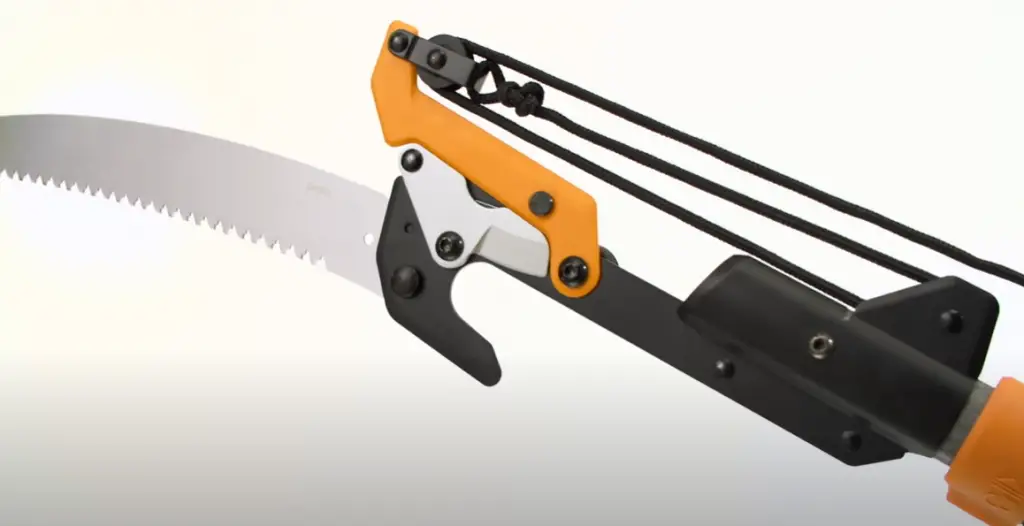
Choosing A Pole Pruner
When selecting a pole pruner, there are several important factors to consider. First, think about the type of pole pruner you need. Handheld models are ideal for trimming small branches, while larger saws on poles are better suited for removing bigger limbs up high in trees. If you will be regularly cutting large-diameter limbs or branches, consider investing in a gas-powered pole pruner for more power.
Finally, consider the weight of the pole pruner. If you’re working overhead or at an angle for extended periods of time, you will want to choose a lightweight model that won’t tire you out quickly.
Worth noting, different pole pruner models feature different safety features. Be sure to read the instructions carefully and follow all safety protocols when operating a pole pruner. [2]
When To Use A Pole Pruner
A pole pruner is a useful tool for trimming branches and shrubs that are too far away or too high to reach with traditional pruning shears.
Minor Pruning On Trees
A pole pruner is an ideal tool for minor pruning on trees. Pruning can help to keep a tree healthy and attractive, as well as reducing the risk of damage from storms or insects. A pole-pruner allows you to make controlled cuts without needing to climb the tree, making it great for small limbs that are too high for your reach.
Trunk Cleanup
Trunk cleanup is an important part of any tree maintenance job. Pruning the trunk and branches ensures that your trees remain healthy and strong. With a pole pruner, you can safely reach hard-to-reach places and make precise cuts with ease. To begin, you’ll need to determine which parts of the trunk need to be pruned. Trim away any dead branches, along with any crossing or rubbing branches and anything that looks diseased or infested. Make sure all your cuts are clean and close to the trunk of the tree.
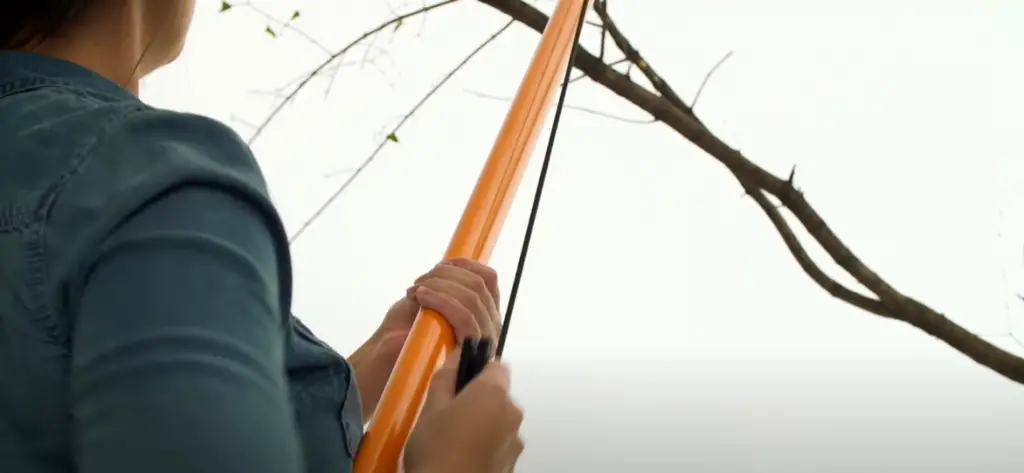
Tidying High On Trellises
Using a pole pruner is a great way to clean up high up trellises that would otherwise be difficult to reach. Start by extending the pole pruner until you have the desired length and angle of cutting. Make sure the blade is sharp and lubricated before starting your work. Then place one arm at the base of the tool with your other arm at the end of the pole to help guide it. With your dominant hand, pull the rope and saw down on branches as large as you can handle with one cut. Be sure to work around the trellis in order to keep it balanced while cutting away all unwanted growth. Once you have removed all unnecessary growth, use a smaller pair of pruners to do any remaining tidying up close to the trellis. This will ensure that you don’t miss anything and keep your trellis looking neat and tidy. [3]
Pole Pruning, General Technique
Pole pruning is a great way to reach high branches and trim them accurately. However, there are some things to keep in mind when pole pruning.
First, make sure you have the right tools for the job. A good quality pole saw or pruner should be long enough to reach the branches that need cutting. Make sure the blade is sharp and free of rust or other damage.
Second, make sure you have a good grip on the pole. If it’s too long for you to control properly, find an extension cord or rope that will give you enough length to reach the branches without overreaching.
Third, be aware of your footing. If the ground is uneven, take extra care to make sure you don’t slip or lose your balance.
Fourth, plan ahead for where branches will fall. Be aware of any potential hazards that could be caused by falling branches. Make sure there are no people or animals in the area before cutting and establish a clear route for the branches to fall away from any obstacles.
Finally, start with the smaller branches on the outside of the tree and work your way in towards more difficult and larger branches. Make sure to measure twice before cutting and always use safety equipment such as gloves, eye protection, and ear plugs. Once you have completed all of your cuts, check for cleanliness and accuracy. [4]
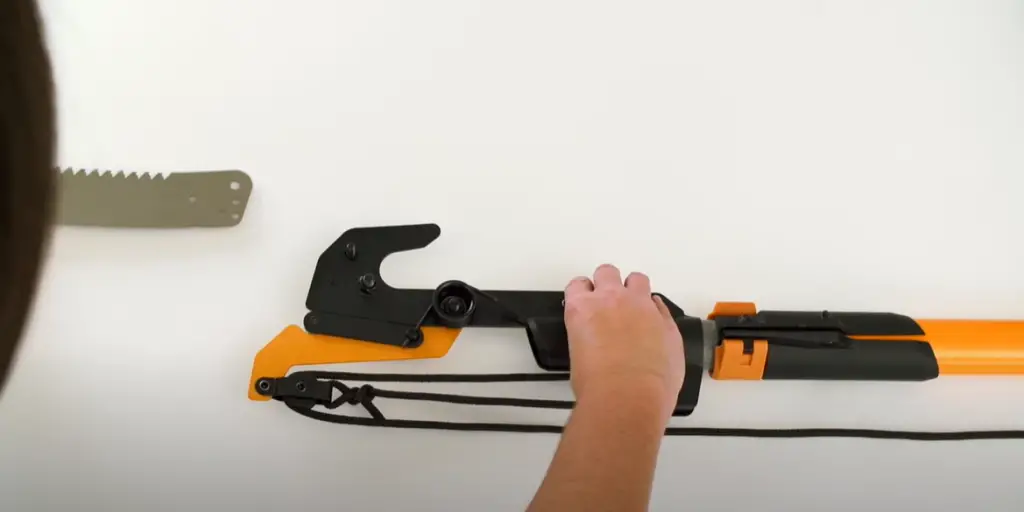
FAQ
How do you run a rope to a pole pruner?
Running a rope to a pole pruner is a relatively simple process. First, tie one end of the rope around the base of the pole pruner handle, near the blade. Then, run the rope up and through the pulley block at the top of the pole pruner. Finally, tie off the other end at a secure point near the ground. Make sure that the rope is of a length that will allow you to comfortably reach and operate the pole pruner.
How do you use a telescopic pruner?
A telescopic pruner is an invaluable tool for those who have tall trees to trim or maintain. It’s a combination of a long pole and a blade on the end that can reach up high and make precise cuts quickly and safely. To use your telescopic pruner:
- Set up a ladder beneath the branch you need to trim.
- Extend the pole fully until it reaches the desired height.
- Make sure that the blade is securely locked in place and check that it’s sharp.
- Securely hold onto both ends of the pole, with one hand holding the bottom section and your other hand firmly gripping near where the blade is attached.
- Make sure the blade is angled correctly, and then make your cut.
- After you’ve made the initial cut, adjust your grip to a more comfortable one for precision pruning.
- Cut away any excess shoots or branches that don’t need to be there.
- Once you are finished pruning, retract the pole and store it away safely.
Using a telescopic pruner is a safe and effective way to trim high branches without having to use a ladder or other dangerous methods. With regular maintenance and sharpening, your pole pruner can be used for years of hassle-free tree care.
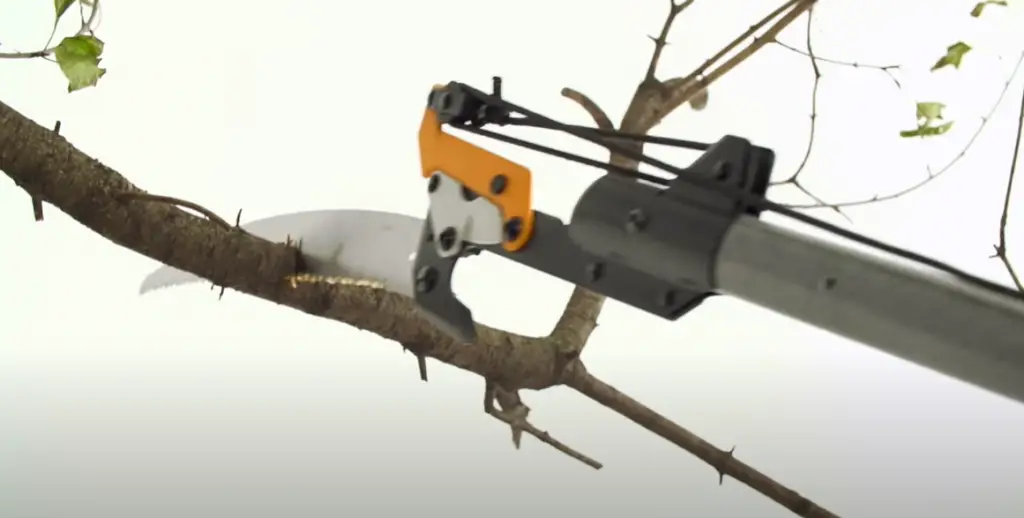
What is the difference between a pole pruner and a pole saw?
Pole pruners and pole saws are two tools that are often confused. The main difference between the two is that a pole pruner is used for cutting branches, whereas a pole saw is used for cutting logs and larger pieces of wood. A pole pruner typically has a short curved blade at the end of an extendable pole, whereas a pole saw has a long, straight blade. Also, a pole pruner generally has the ability to cut thicker branches than what a pole saw can handle. However, some pole saws have a specialized curved blade that can cut thicker branches, so it’s important to check the specifications of each tool before making a purchase.
How do you cut branches with a pole saw?
Using a pole saw is an easy and efficient way to cut larger branches from trees. A pole saw is a long-handled tool that has a curved blade on one end and a handhold near the other. It may be powered by electricity or gasoline, or it may be manual with no motor. To use the pole saw, you should:
- Make sure the pole saw is in good working condition and is properly lubricated.
- Stand firmly on the ground, but close enough to the tree to reach the branch you want to cut.
- Pull back on the handle of the saw so that it locks into place against your hand.
- Position the blade of the saw in the desired cutting area and begin to cut through the wood.
- Cut slowly, using a back-and-forth sawing motion.
- When the branch has been completely severed from the tree, use your other hand to catch it before it falls to the ground.
- Disengage the pole saw from your hand and place it in a safe location.
- Clear away any debris or fallen branches after you have finished cutting.
By following these steps, you will be able to safely and easily cut larger branches with your pole saw. It is important to remember that if you are ever in doubt about how to use the tool, you should always consult an expert for advice before attempting any work yourself. Safety should always be a top priority when using any kind of power tool or sharp instrument.
Is a pole saw easy to use?
Yes, most pole saws are designed for easy use. They are lightweight and have a long reach, making them ideal for trimming trees, pruning hedges, or cutting branches from tall heights. Most pole saws come with adjustable handles to ensure proper ergonomics and a comfortable grip. The blades are also made of durable steel, and the saws can be powered by electricity or gas. However, safety should always be a top priority when using any kind of saw, so it is important to take the necessary precautions and read any instructional manuals that come with the saw before beginning. Additionally, it is important to make sure that you are wearing protective gear such as eye protection and gloves.
How thick can a pole pruner cut?
A pole pruner is designed to cut branches that are up to 1 inch in diameter. If you’re looking to cut anything thicker than this, then you may need a larger saw or axe. It’s also important to ensure that your blade is sharp and in good condition as it will not be able to cope with cutting thicker branches. Additionally, if you’re cutting thicker branches, then it’s important to be extra careful and use protective safety equipment such as gloves and eye protection. It is also recommended that you have a spotter or second person present to help guide the branch as it falls.
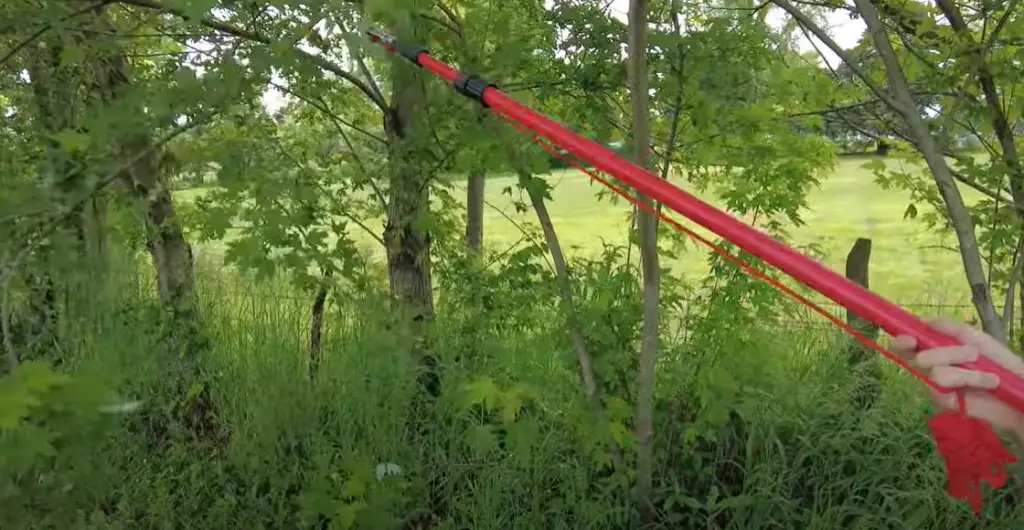
What is the rope on a pole saw for?
The rope on a pole saw is used to pull the chain around the bar. This allows you to move the blade quickly and with less effort, making it easier to cut branches and limbs. The rope should be adjusted periodically to ensure that it’s taut and not too loose, otherwise it may slip off or become tangled while cutting. When the rope needs adjustment, refer to the manufacturer’s instructions for proper care and use. Additionally, it is important to keep the rope clean and lubricated with bar oil to prevent fraying and wear.
What is the difference between pruners and loppers?
Pruners and loppers are both types of hand tools used to trim trees, shrubs and other plants. Pruners are small cutting blades with a handle that allow for one-handed operation. Loppers, on the other hand, have two handles which require two hands to operate. Pruners generally have shorter blades than loppers, making them better suited for pruning small branches and stems. Loppers, which are designed to cut thicker branches, have longer blades that require more force to use. It is important to select the right tool for the job since using a pruner on large branches can damage or even break the blade.
What is the function of a pruner?
A pruner is an essential tool for any gardener or landscaper. Pruners are designed to cut branches, twigs, and stems of plants and trees. By cutting away dead or damaged wood, you allow the plant or tree to focus its energy on growing healthy new foliage and flowers. Pruning also helps shape the plant or tree and makes it more aesthetically pleasing. Also, if pruning is done properly, it can help to reduce the spread of disease and pests.
Useful Video: TESTED! Corona Pole Saw & Tree Pruner (2021)
Conclusion
Using a pole pruner can be an effective way of keeping your trees and shrubs in the desired size and shape. However, it is important to understand how to use a pole pruner properly. Make sure to read up on safety measures prior to operation, select the right tool for the job, attach the cutting head securely, maintain good posture while working, and check the blade often. With these tips in mind, you’ll be able to prune efficiently and safely. For more information on pole pruners and other tools, contact your local garden center or visit a professional arborist. With the right knowledge and tools, you can keep your trees and shrubs healthy, while also making sure they look beautiful.
References:
- https://homeguides.sfgate.com/use-string-pole-pruner-83733.html
- https://ozito.com.au/community/top-tips-pole-pruner/
- https://www.thespruce.com/how-to-use-pole-pruners-3269521
- https://www.richardsonsaw.com/rslm/use-pole-pruner-pole-saw/

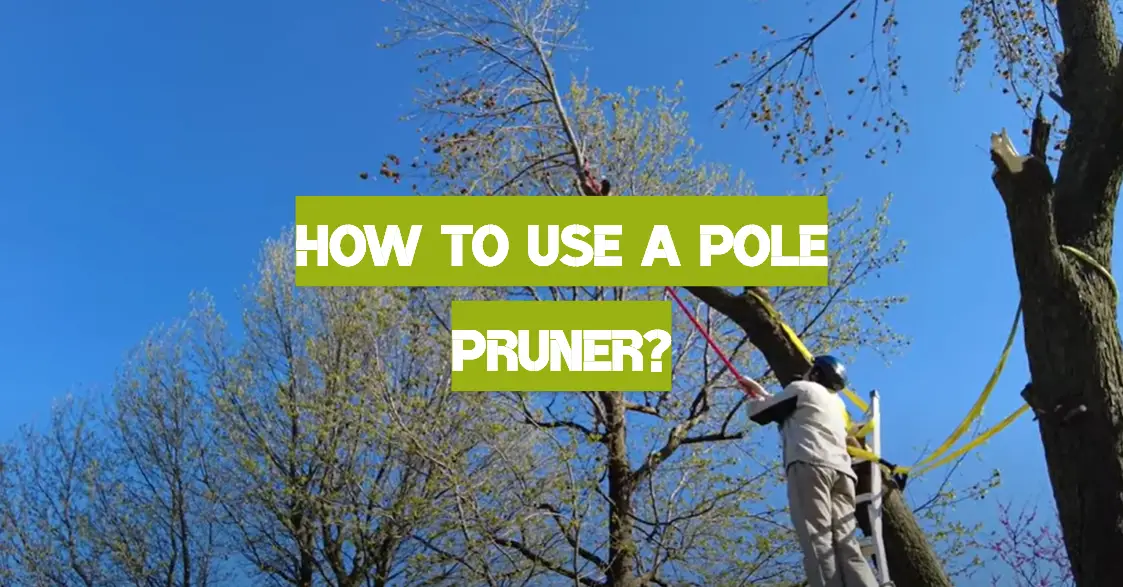

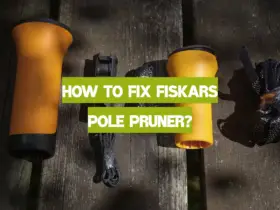

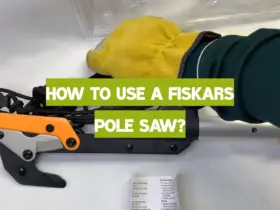

Leave a Reply